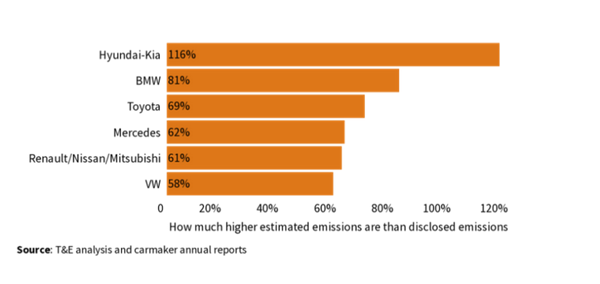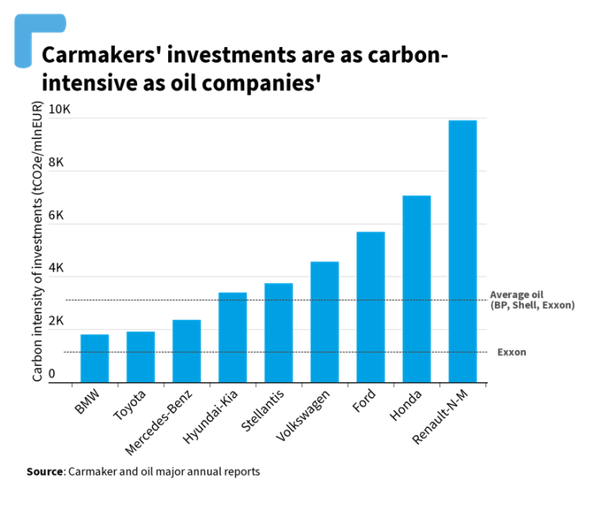
According to a recent Transport & Environment (T&E) analysis, carmakers’ global carbon (CO2) emissions are on average 50% greater than what they record, with Hyundai-Kia and BMW under-reporting carbon emissions by as much as 115% and 80%, respectively.
The EU will force financial organizations to publish their scope 3 emissions beginning in 2023. (indirect emissions). The new regulation will have a significant impact on asset managers with exposure to automakers. Unlike furniture or phone makers, the great bulk (98%) of a vehicle company’s emissions fall within scope 3 – principally the usage of the automobiles.
Carmakers base their total reported emissions on a variety of parameters such as vehicle average size, driving location, and vehicle longevity. They in general have exploited chosen data to arrive at a lower figure. Toyota, for example, bases its vehicles’ lifetime average emissions on a hardly credible 100,000 kilometers.

As a result, automotive firms are virtually as carbon heavy as the oil sector in terms of investment. In other words, a euro invested in a vehicle firm funds roughly the same amount of carbon as a euro put in an oil company.
According to carmakers’ reporting, the carbon intensity of carmakers is considerably greater in some cases: approximately 10,000 tonnes if invested in Renault-Nissan-Mitsubishi and 7,000 tonnes for Honda.

Morningstar, a US-based financial business, predicts that by the end of 2022, 50% of all new financial products launched will be based on environmental, social, and governance (ESG).
However, ESG ratings do not accurately reflect a company’s overall environmental effect. Despite being the most significant environmental indicator, CO2 emissions account for less than 1% of the ESG rating for S&P and MSCI, two of the world’s major ESG indexes.
The above article is based on Transport & Environment (T&E); researched and edited by Clean-Future Team






